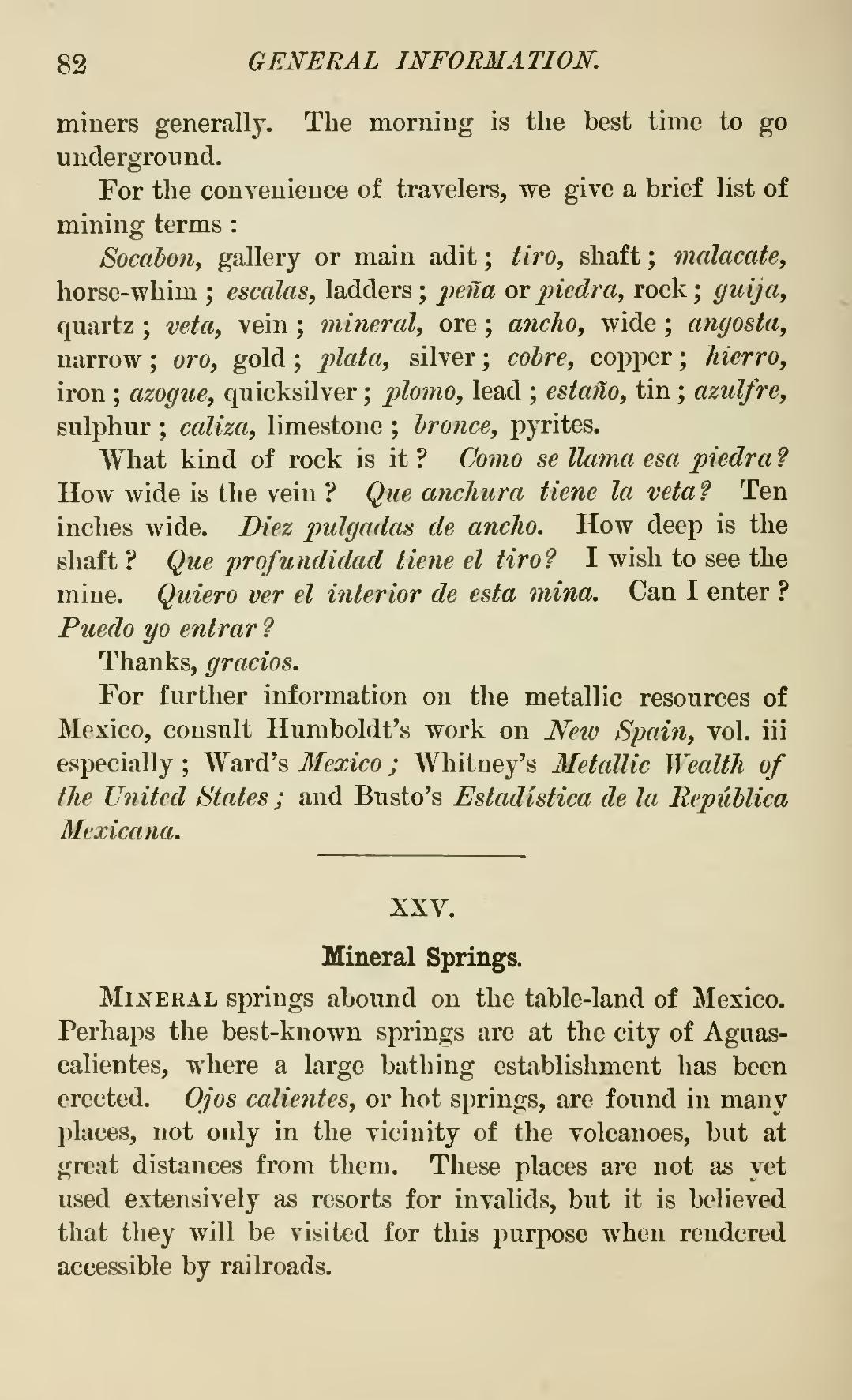miners generally. The morning is the best time to go underground.
For the convenience of travelers, we give a brief list of mining terms:
Socabon, gallery or main adit; tiro, shaft; malacate, horse-whim; escalas, ladders; peña or piedra, rock; guija, quartz; veta, vein; mineral, ore; ancho, wide; angosta, narrow; oro, gold; plata, silver; cobre, copper; hierro, iron; azogue, quicksilver; plomo, lead; estaño, tin; azulfre, sulphur; caliza, limestone; bronce, pyrites.
What kind of rock is it? Como se llama esa piedra? How wide is the vein? Que anchura tiene la veta? Ten inches wide. Diez pulgadas de ancho. How deep is the shaft? Que profundidad tiene el tiro? I wish to see the mine. Quiero ver el interior de esta mina. Can I enter? Puedo yo entrar?
Thanks, gracios.
For further information on the metallic resources of Mexico, consult Humboldt's work on New Spain, vol. iii especially; Ward's Mexico; Whitney's Metallic Wealth of the United States; and Busto's Estadistica de la Repilblica Mexicana.
XXV.
Mineral Springs.
Mineral springs abound on the table-land of Mexico. Perhaps the best-known springs are at the city of Aguascalientes, where a large bathing establishment has been erected. Ojos calientes, or hot springs, are found in many places, not only in the vicinity of the volcanoes, but at great distances from them. These places are not as yet used extensively as resorts for invalids, but it is believed that they will be visited for this purpose when rendered accessible by railroads.
